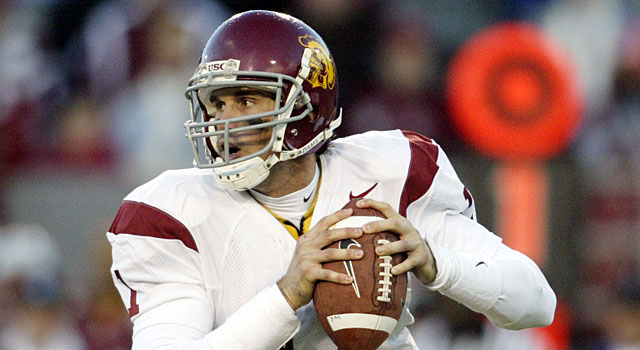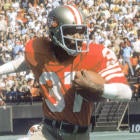
Throughout June and July and to commemorate the final year of the BCS era, Jerry Palm will be taking a year-by-year look at the machinations and controversies of the postseason system unleashed upon college football in 1998. Previous installments of the series can be found HERE.
Format: The championship game was the Sugar Bowl. The regular Sugar Bowl wasn't played.
Number of bowls: 28. New bowls: Fort Worth. Defunct bowls: Seattle. The move from Hawaii failed after two years.
Number of Division I-A teams: 117. New schools: None.
Conference realignment: Utah State joined the Sun Belt, because when we think sun, we think Utah. Also, South Florida hooked up with Conference USA.
Formula changes: Since the top two teams in the polls in 2002 played for the title, no change was made.
The top two in the polls would not rise to the top in 2003. USC finished atop of both the AP and Coaches’ Polls but only third in the BCS. Oklahoma, which suffered its first loss of the season in the Big 12 title game, finished third in both polls but first in the BCS. The Sooners were helped by the fact that there were no undefeated teams and just three one-loss teams, so the floor for them in the polls after their loss was still pretty high. They were also the top-rated team by the computers and in strength of schedule among the top three. The Trojans were lowest rated in those two categories.
The difference between USC and No. 2 LSU was just 0.16. It was so close that I remember staying up until 3 a.m. waiting for Hawaii-Boise State to finish because if the Rainbow Warriors won, USC would have received enough of a strength-of-schedule bump to have finished second in the BCS.
The end result was that LSU beat Oklahoma for the BCS title, USC won the Rose Bowl and was made No. 1 by the AP. The Coaches’ Poll automatically gives its final top ranking to the winner of the BCS title game. That’s the dreaded “split national championship” that the BCS was created to avoid.
The BCS kept adjusting its formula every time the top two teams in the polls didn't play for the title. The problem is, every change they made gave the polls less influence, making it more likely that the top two teams wouldn't play for the title. It was a matter of time -- six years to be precise -- before the top team in the polls got left out and the chaos of 2003 occurred. That would be the last season of that version of the formula. Big changes were afoot.
If the soon-to-be-launched four-team playoff were in place:
Hey! They actually played these semifinal games. USC beat Michigan in the Rose Bowl, and LSU took down Oklahoma in the Sugar in 2003. Those matchups might have been in different bowls, but USC and LSU could have played for the championship under the four-team playoff scenario.
Miami, Ohio finished 12-1 and just inside the top 15 in the polls. The Redhawks lose out here to the other Miami, which finished ninth and won the Big East in its final year in that league.
Fiesta Bowl: No. 1 USC vs. No. 4 Michigan
Peach Bowl*: No. 2 LSU vs. No. 3 Oklahoma
Cotton Bowl: Texas vs. Purdue
Sugar Bowl: Kansas State vs. Tennessee
Orange Bowl: Miami vs. Georgia
Rose Bowl: Ohio State vs. Florida State
*- The Peach Bowl became the Chick-fil-A Bowl in 2006.




















